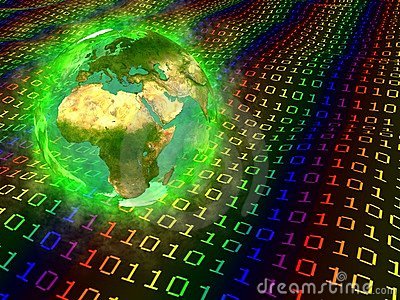It might seem somewhat ludicrous to dedicate a blog to the subject of Digital Diplomacy without first offering a definition of the term Digital Diplomacy. However, this is no simple task as there is currently no such definition. While foreign ministries throughout the world have been eager to adopt Digital Diplomacy, each ministry defines and practices this form of diplomacy in a different manner. Yet what is certain is that the search for a definition of Digital Diplomacy must begin with examining the changes that occurred to both the definition and conduct of diplomacy during the 20th century.
A Century of Change:
Diplomacy altered considerably throughout the 20th century. At the beginning of the century, diplomacy had the strict interpretation of all communication between the government of one country and the government of another. Direct communication between the government of one country and the population of another was banned by the international community and was regarded as a breach of sovereignty.
But three world events in the 1920′s and 30′s altered the definition and practice of diplomacy. The first was the widespread use and immense popularity of the radio. The second was the Bolshevik revolution of 1917 and the Nazi’s rise to power in 1933 and the third was the use made by both the Nazis and the Bolsheviks of the radio in order to propagate revolutions in neighboring countries. Both Russia and Germany spoke directly to the populations of neighboring nations thereby circumventing their respective governments. And just like that, Public Diplomacy was born.
Defining Public Diplomacy:
Public Diplomacy refers to processes in which countries seek to accomplish their foreign policy goals by communicating with foreign publics. It is also a tool for creating a positive climate amongst foreign populations in order to facilitate the acceptance of one’s policies. Following the revolutions of the 1920′s and 30′s, numerous countries began to practice Public Diplomacy. France sent cultural attaché’s to its embassies abroad, the United States established the Voice of America radio station and the BBC’s world service began broadcasting in a variety of languages. As the Cold War intensified, direct communication with the opponent’s population was perceived to be just as important as the size of one’s nuclear arsenal.
Yet as the 20th century came to end, a new form of diplomacy known as Digital Diplomacy began to immerge.
The Global Rise of Digital Diplomacy:
First described in 2001, Digital Diplomacy is the talk of the town in the corridors of international diplomacy. Some have defined Digital Diplomacy as the growing use of Information and Communication Technologies (ICTs) and social media platforms in the conduct of Public Diplomacy. Those who adopt this definition believe that the medium has changed but not the message. Instead of talking to foreign publics over the radio, one now communicates with them through a twitter channel.
Others believe that Digital Diplomacy is more than a new tool in a used tool box.
Via its twitter channel, an Israeli embassy can now establish two way communications with its followers. Instead of speaking at audiences through the TV, Israeli diplomats can now converse with foreign publics by responding to posts on their Facebook profiles. This is the dialogue made possible by Digital Diplomacy which could replace the monologue of Public Diplomacy. Such two way communication offers more opportunities for engagement with foreign publics, engagement that may facilitate the creation of relationships between one country and the population of another.
If one wishes to understand the scope of the Digital Diplomacy phenomenon he should examine the State Department’s Digital Diplomacy mechanism which includes more than 288 Facebook profiles, 200 twitter channels and 125 YouTube channels. This mechanism has been referred to as a global media empire.
Arriving at the Definition of Digital Diplomacy:
There seem to be two schools of thoughts regarding Digital Diplomacy. The first claims that it is a new tool in the conduct of Public Diplomacy. Others maintain that it increases the ability to interact with foreign publics and actively engage with them thereby enabling the transition from monologue to dialogue. So perhaps the best definition of Digital Diplomacy would incorporate both perspectives and state that: Digital Diplomacy is the growing use of ICTs and social media platforms by a country in order to achieve its foreign policy goals and practice Public Diplomacy.
The following source material was used in this article:
Cull, N. J. (2008). Public diplomacy: Taxonomies and histories. The Annals of the American Academy of Political and Social Science, 616(1), 31-54.
Metzger, E. T. (2012). Is it the medium or the message? Social media, American public relations Iran. Global Media Journal, 1-16.
Roberts, W. R. (2007). What is public diplomacy? Past practices, present conduct, possible future. Mediterranean Quarterly, 18(4), 36-52.
Shenhav, S. R., Sheafer, T., Gabay, I. (2010). Incoherent narrator: Israeli public diplomacy during the disengagement and the elections in the Palestinian Authority. Israel Studies, 15(3), 143-162.
Hayden, C. (2012). Social Media at State: Power, Practice and Conceptual Limits for US Public Diplomacy? Global Media Journal, 1-15.
Dizrad Jr, W. (2001). Digital Diplomacy U.S. foreign policy in the information age. London: Praeger














